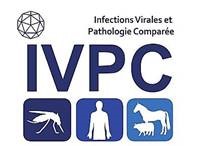Genetic diversity of β-retroviruses causing respiratory cancers in small ruminants
Résumé
Background
ENTV (Enzootic Nasal Tumor Virus) and JSRV (Jaagsiekte Sheep RetroVirus) are oncogenic β-retroviruses inducing respiratory cancers in small ruminants, endemic in many countries. While JSRV mainly infects sheep and induces lung cancer, ENTV-1 and ENTV-2 respectively infect sheep and goats and are responsible for nasal tumors. As in other mammals, multiples copies of endogenous β-retroviruses (ERV) resulting from ancestral infections of germinal cells are integrated in the sheep and goat genomes. Endogenous and exogenous retroviruses are highly related (~ 90 % of nt sequence similarity along the genome) making the specific detection of exogenous β-retroviruses a real challenge. There is a limited number of exogenous β-retroviruses sequences available in the public databases, and some of them may be resulting from the assembly of endogenous and exogenous copies leading to chimeric sequences. To selectively sequence the exogenous oncogenic viruses and characterize the circulating strains at the origin of cancers in flocks, we have developed a strategy to amplify partial or full-length exogenous genomes, based on (ERV vs exogenous) discriminating regions.
Method
The genetic diversity of the sheep and goat β-retroviruses (29 JSRV and 23 ENTV strains), circulating in France, has been analysed in the env gene, encoding the oncogenic determinant, and in the LTR (Long Terminal Repeat), the non-coding region of the integrated provirus controlling viral replication.
Results
French ENTVs were globally less diverse (0.4 % nucleotide variability) than JSRVs (4.8 %). JSRV strains circulating in France were distributed in 2 clades, already reported in other countries. Viruses analyzed along a 4-year period in the same flock evidenced the stability of JSRV, with no variability either in env or in the LTRs. The nucleotide and amino acid variability of env within a clade was respectively < 1.8 % and < 0.8 %, highlighting a high genomic stability of JSRV. The phylogenetic reconstruction based on LTR and env suggests that a single ENTV-2 strain circulates in France which does not cluster with previoulsy published sequences in Europe, North America or Asia.
This characterization of JSRV and ENTV LTR sequences enabled us to develop a near full-length amplification of the proviruses. Using 3rd generation sequencing (Nanopore technology) we are currently investigating the global proviral polymorphism, quasispecies within a single host, and the presence of potential recombination events.
Conclusion
Lay summary
We developped and validated a new method to sequence simultaneously the provirus, integration site & transcriptome at the single cell level. This is approach is sensitice enough to capture the intra- and inter-clone diversity in viral transcript expression and identify the associated proviral structure.
| Origine | Fichiers produits par l'(les) auteur(s) |
|---|---|
| licence |




